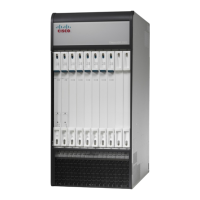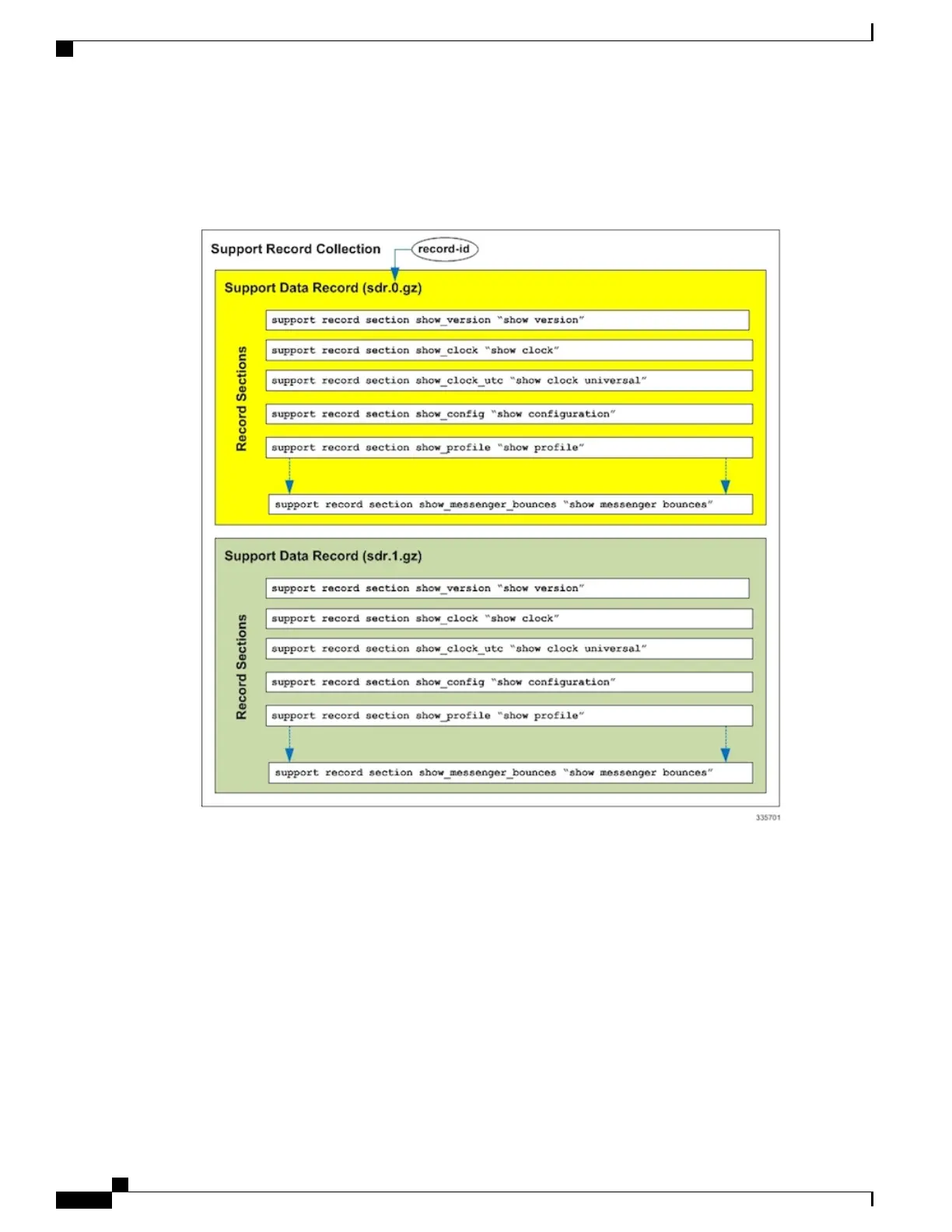The next older SDR is record-id 1, and so on, for the number of records in the stored collection. For example,
if there are five SDRs, they are identified as SDR-0 through SDR-4.
Figure 17: Support Data Collection Hierarchy
When a new SDR is created, the numbers all increment by one and the newest SDR is given the value of 0.
If the total number of records exceeds a configured maximum, then the oldest SDR is deleted.
Using the example above, when the maximum SDR count of 5 is reached, the SDRs continue to be SDR-0
through SDR-4, with the file timestamps indicating that the files are changing over time.
The time interval between collections may vary by several minutes in relation to the specified sleep-duration.
This is because the interval specifies the idle time between scheduled collection runs. Since the actual overhead
of the collecting process is not included in the scheduled intervals, the time differences between collections
includes this non-deterministic amount of time.
ASR 5500 System Administration Guide, StarOS Release 21.5
302
Support Data Collector
Managing Record Collection

